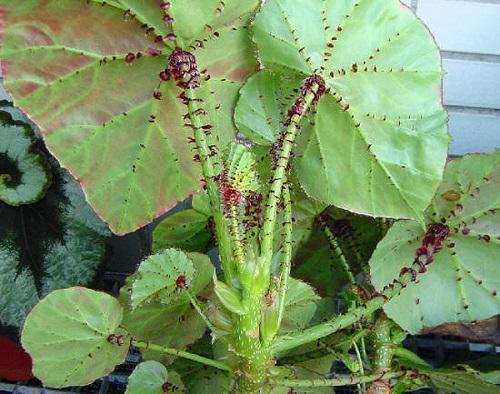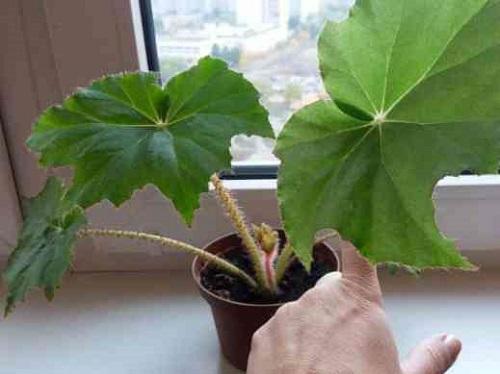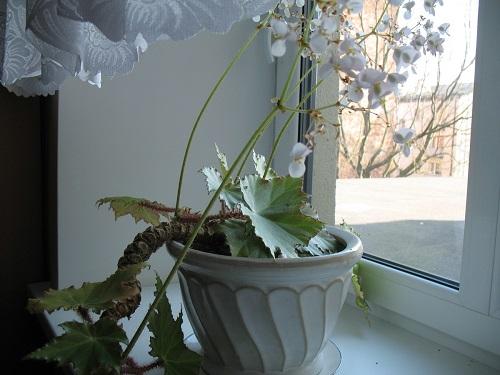Beauty collar begonia
Collar begonia represents decorative flowering plants. It possesses beautiful light green leaves with a slight fluff on the edges. The reverse side of the leaf is streaked with red. Begonia grows on average up to 60 cm, has a thick creeping stem. The flowering period mainly falls in the winter, the flowers themselves are not large, pink in color, hanging with tassels (sometimes up to 5 pieces) on the top of the plant.

At home, a flower lives on average for about 3 years, but individual specimens can live up to 10 years with proper care, namely:
- Correctly selected soil and pot.
- Suitable lighting.
- Providing the necessary watering and moisture levels.
- Compliance with the temperature regime.
- Timely introduction of fertilizing necessary for the plant.
- Flower transplant as needed.
The choice of soil and pot for planting begonias

Collar begonia grows well in loose soil. For planting begonias, it is better to prepare mixed soil:
- 3 pieces of leafy land;
- 1 part of sod land;
- 1 part peat;
- 1 part sand;
- 1 part humus.
The begonia pot should not be too large, it is better to take a little cramped one. In such a pot, the root system of the plant will be limited by the volume of the flowerpot, which will allow excess water to drain faster, and the begonia itself will receive more strength for the growth of the upper leaf part.
Flower lighting

Begonia belongs to light-loving plants, thanks to the sun's rays, it has a bright color of leaves. However, the plant must be protected from their direct contact, since the delicate leaves will get burned and quickly disappear. An ideal location for a flowerpot would be an east or west window sill. Keeping on the southern windowsill is possible only in winter.
Providing the necessary moisture and watering

Begonia does not react well to excessive moisture, so watering should be moderate. In the hot summer months, the flower is watered a little more often, but not before the top layer of soil in the pot dries out. With the onset of winter, watering should be minimized, moistening the begonia only to keep the soil moist.
It is also recommended to spray the plant in the hot summer months. To create the necessary humidity, you can also put a glass of water on the windowsill near the pot.
During spraying, you can not direct water to the flower itself, only moisten the area around the begonia.
Air temperature

The most suitable temperature for growing begonias is not less than 16, and not more than 20 degrees Celsius. In winter, it is better to put the flower near the balcony, but in no case under the battery.
Fertilizing begonias
Every spring begonia should be fed with complex fertilizers. If it is possible to take the pot outside for the summer, you can water the begonia with a solution with the addition of bird droppings or mullein.
Begonia transplant

Once the pot is completely filled with roots, the begonia needs to be transplanted into a larger container. It is better to replant the flower in the spring when it no longer blooms. During transplantation, begonia can be propagated by separating part of the root system.Also, the plant reproduces well with leaves and petioles.